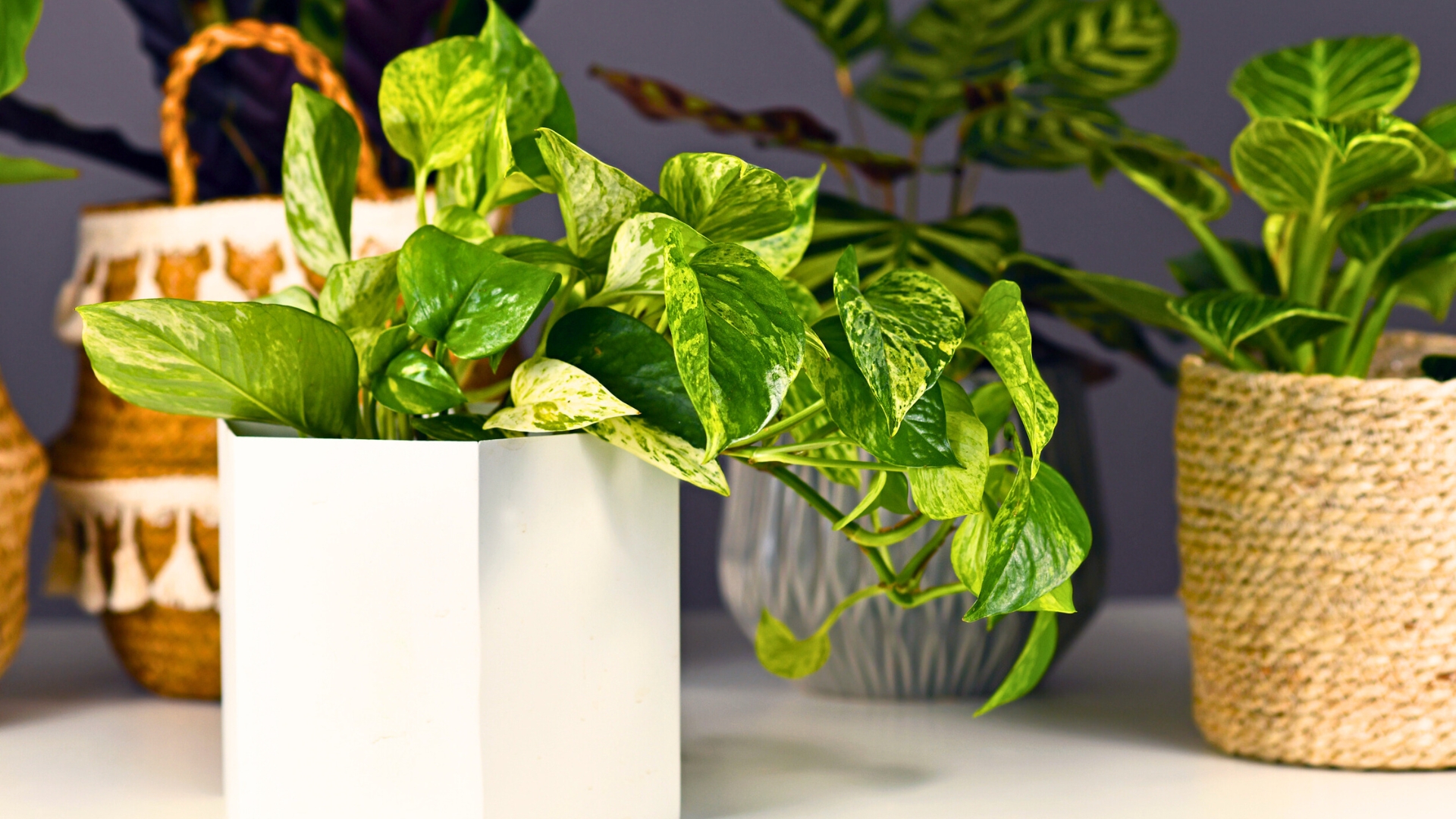Bring Your Leggy Pothos Back To Life With These 10 Proven Tricks
I’ve been there—one day your pothos is thriving, the next it’s all legs and no leaves. It’s like it decided to skip the lush phase and go full awkward.
But don’t give up on it just yet! With a few simple tweaks, you can bring that scraggly plant back to its full, leafy glory. These are the tricks I swear by when mine start looking more vine than vibe.
1. Strategic Pruning
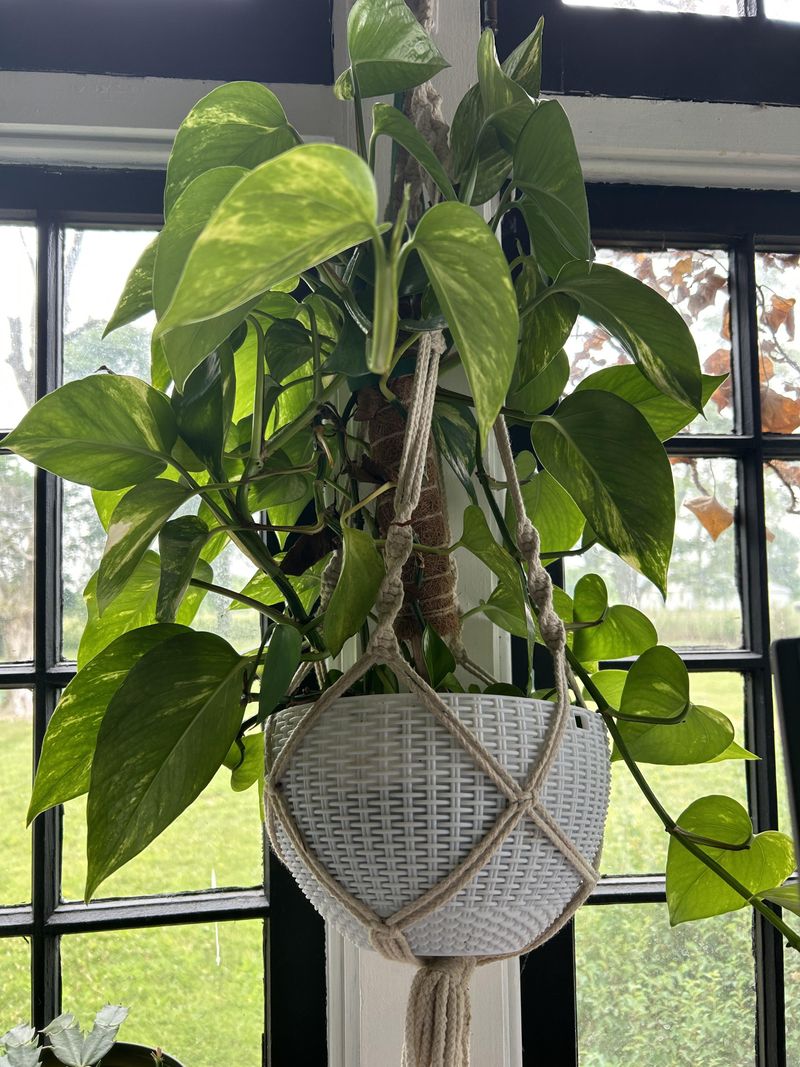
Grab those scissors and show your pothos some tough love! Cutting back leggy stems encourages bushier growth near the base. Make cuts just above leaf nodes (those little bumps where leaves emerge).
After pruning, you’ll notice new growth points activating within weeks. Don’t throw away those cuttings either – they’re perfect propagation material for creating new plants or filling in bare spots in your existing pot.
2. Rotate Regularly

Plants naturally grow toward light sources, creating uneven, stretched growth. Give your pothos a quarter turn every week to ensure all sides receive equal light exposure and develop balanced foliage patterns.
This simple habit prevents the one-sided stretching that leads to legginess. Mark your calendar or set a phone reminder – consistent rotation makes a surprising difference in maintaining your pothos’s compact, full appearance.
3. Optimal Light Positioning
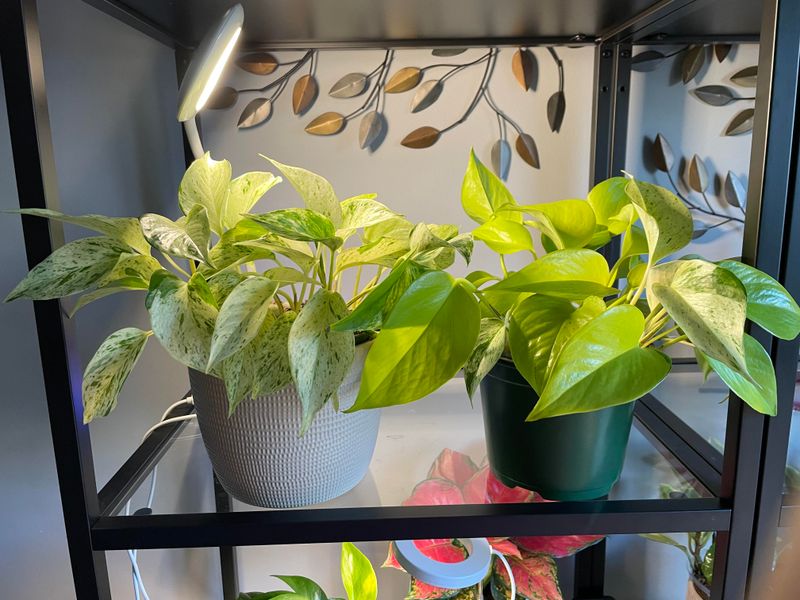
Finding the sweet spot for light exposure revolutionizes pothos growth. These adaptable plants thrive in bright, indirect light – not too dark, not too sunny. Move your plant closer to windows but avoid harsh direct rays.
North or east-facing windows typically provide ideal conditions. If using artificial lights, position grow lights 12-18 inches above the plant and run them for 10-12 hours daily to encourage compact, healthy growth patterns.
4. Pinching Technique
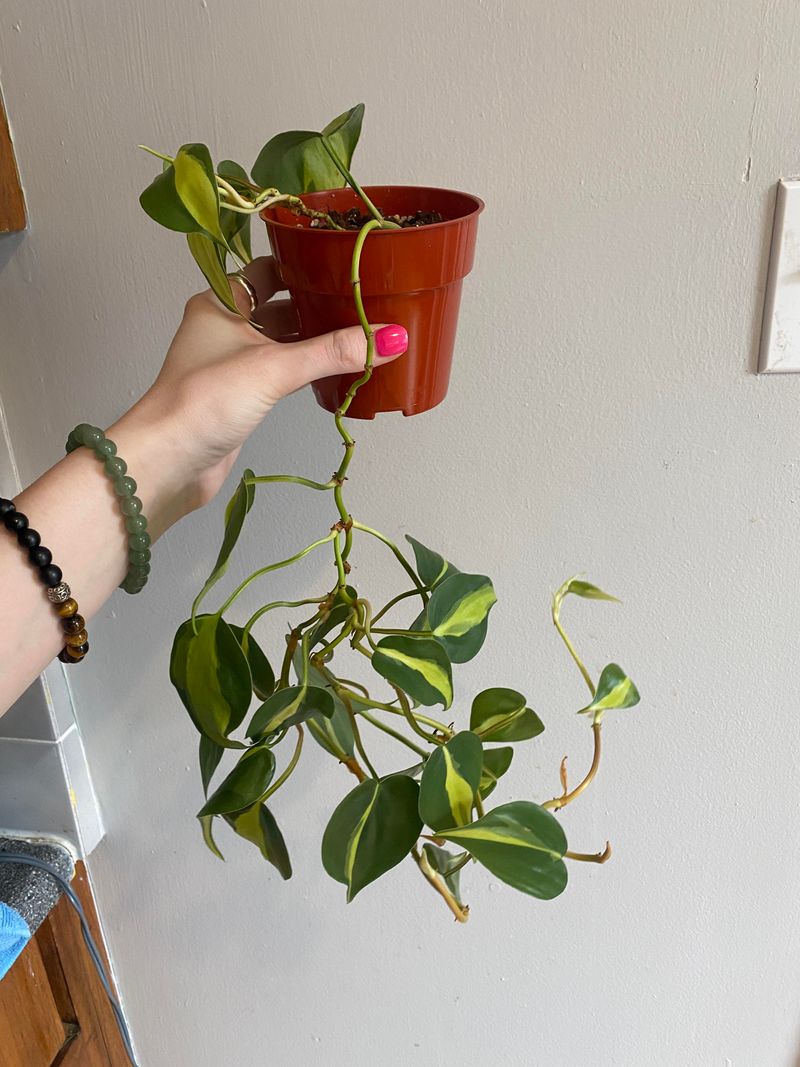
Forget fancy tools – your fingers are perfect for this job! Gently pinch off the growing tips of your pothos vines using your thumbnail and forefinger. This simple action signals the plant to branch out rather than grow longer.
Focus on pinching the ends of the leggiest vines first. The plant responds by activating dormant growth nodes further down the stem, creating a fuller appearance. Repeat monthly during active growing seasons for best results.
5. Proper Fertilization

Feeding your pothos correctly makes all the difference between leggy stretching and compact fullness. Choose a balanced liquid fertilizer (10-10-10) diluted to half strength and apply monthly during spring and summer.
Avoid over-fertilizing, which causes weak, stretched growth. During fall and winter, reduce feeding to once every two months. This measured approach provides nutrients without encouraging the lanky growth that happens when plants grow too quickly.
6. Rejuvenation Repotting
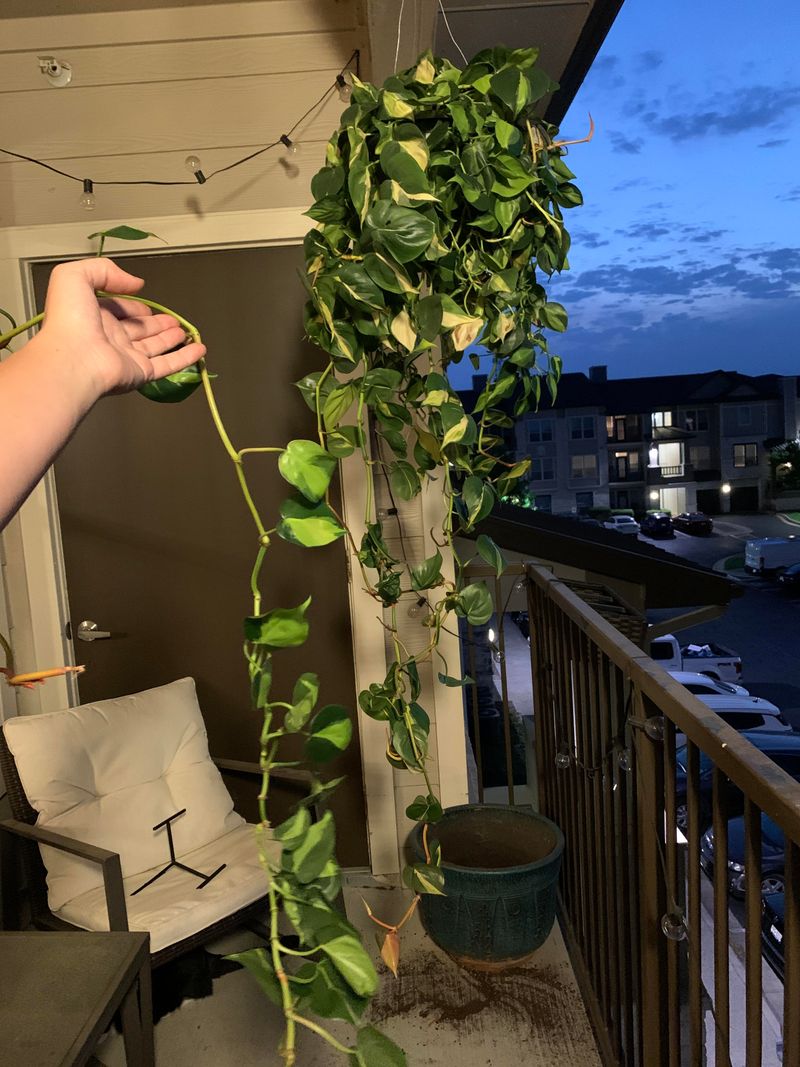
Sometimes a fresh start in new soil works wonders for leggy pothos. Choose a container just 1-2 inches larger than the current pot and fill with quality, well-draining potting mix. Gently loosen root-bound plants before replanting.
When repotting, position the plant slightly deeper than before, allowing you to bury some of the leggy stem portions. Water thoroughly after repotting, then wait until the top inch of soil dries before watering again.
7. Strategic Propagation
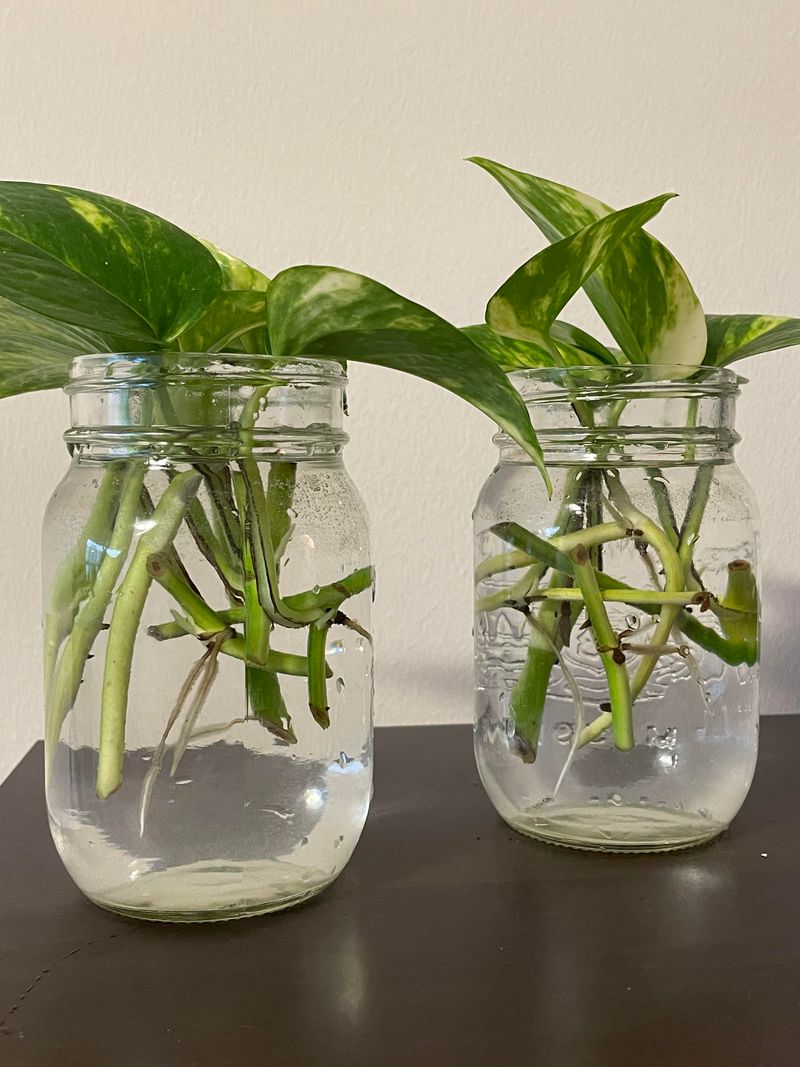
Transform those leggy vines into an abundance of new plants! Cut 4-6 inch sections from healthy stems, ensuring each cutting has 2-3 leaf nodes. Remove leaves from the bottom node and place in water or directly into moist soil.
Once rooted, plant multiple cuttings back into the original pot to create a fuller appearance. This method not only fixes legginess but multiplies your plant collection. Root development typically takes 2-3 weeks in water before transplanting.
8. Humidity Boost

Surprising but true – proper humidity levels encourage compact, healthy pothos growth. Increase moisture around your plant by misting regularly, using a pebble tray with water, or placing a small humidifier nearby.
Aim for humidity levels between 50-70% for optimal results. When pothos receive adequate humidity, they direct energy toward producing lush foliage rather than stretching to find resources. This simple environmental adjustment often reduces legginess within weeks.
9. Coiling Technique

Long, leggy vines don’t need to be cut! Try the coiling method by gently laying lengthy stems back onto the soil surface in a circular pattern. Secure with small plant pins or bobby pins at leaf nodes.
These contact points will eventually develop roots and new growth points, creating a fuller plant. Keep the soil consistently moist during this process to encourage rooting. Within a month, new shoots will appear, transforming your leggy pothos into a lush tabletop specimen.
10. Temperature Management
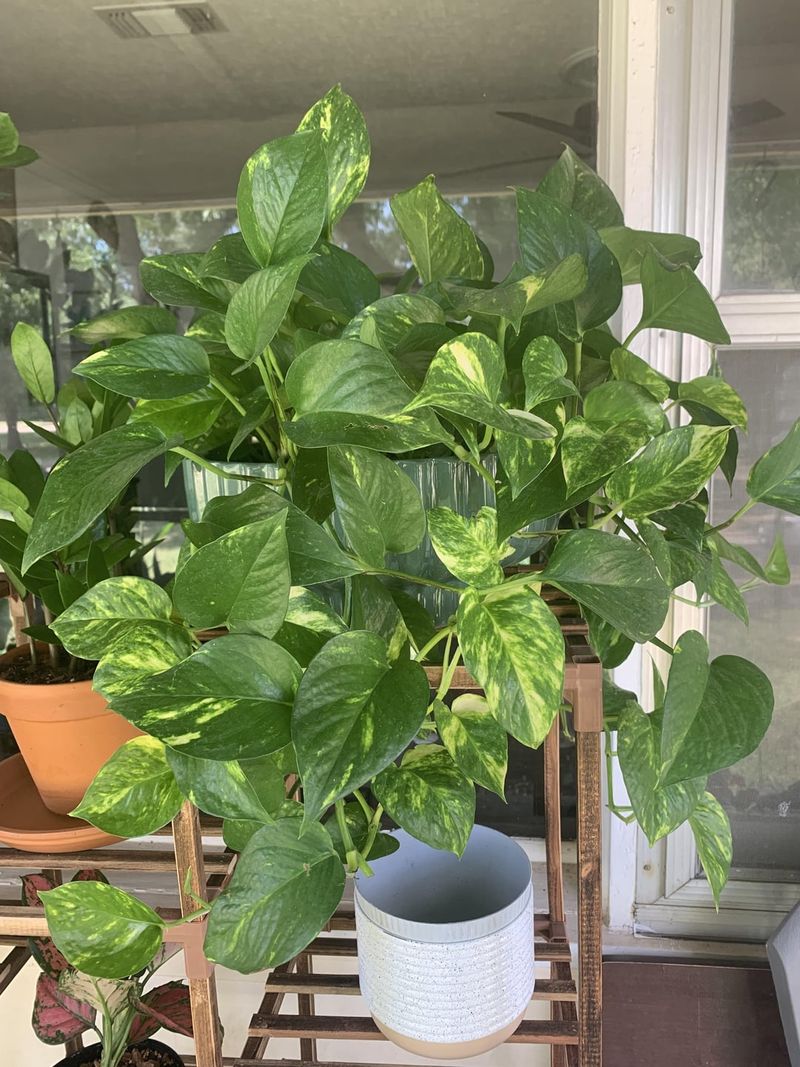
Maintaining ideal temperatures dramatically improves pothos growth patterns. Keep your plant in areas between 65-85°F (18-29°C) and away from cold drafts, air conditioning vents, and heating elements that cause stress.
Temperature stability prevents the growth fluctuations that contribute to legginess. Moving plants from extreme temperature zones often results in visible improvement within weeks. During winter, be especially mindful of keeping pothos away from cold windows.

